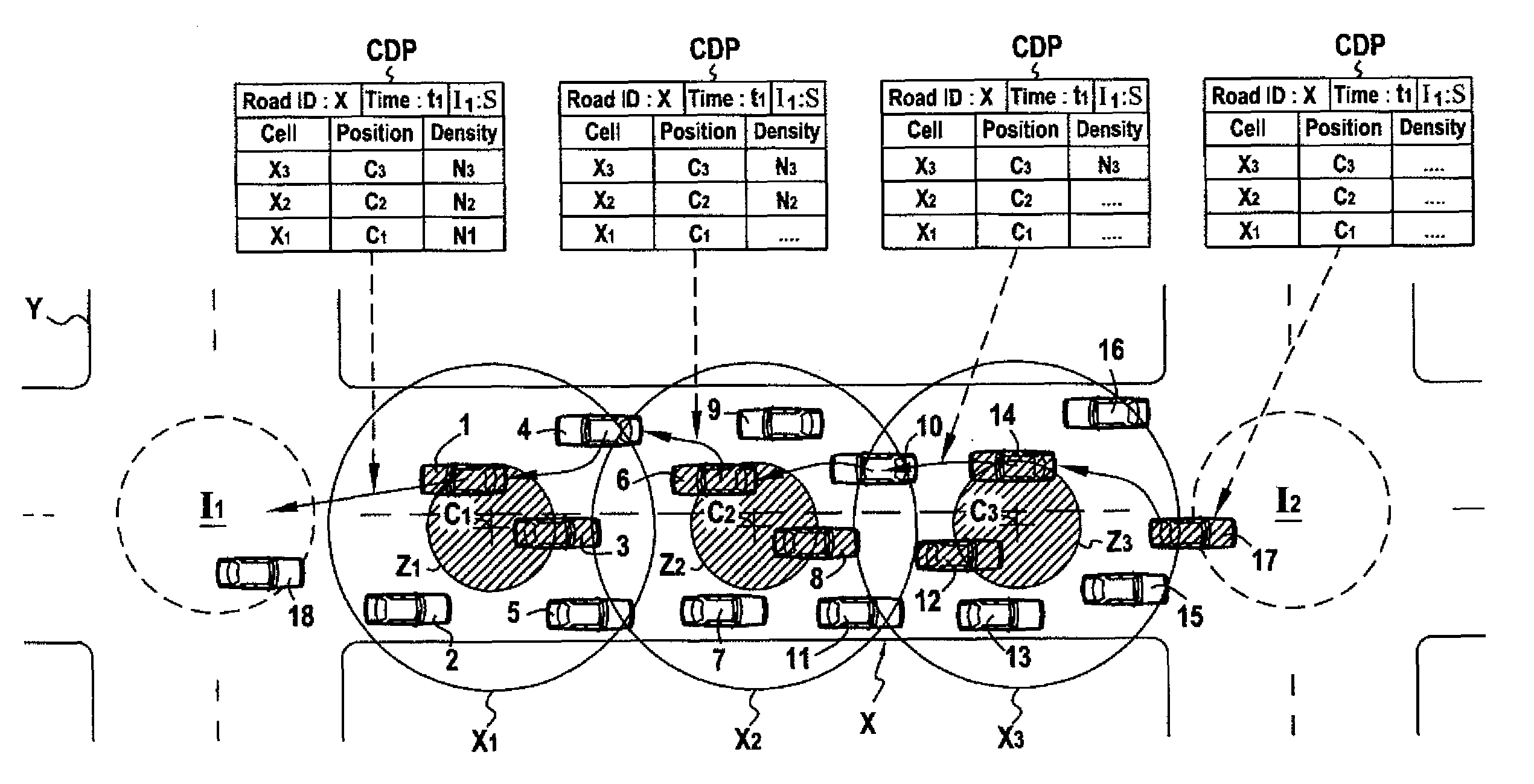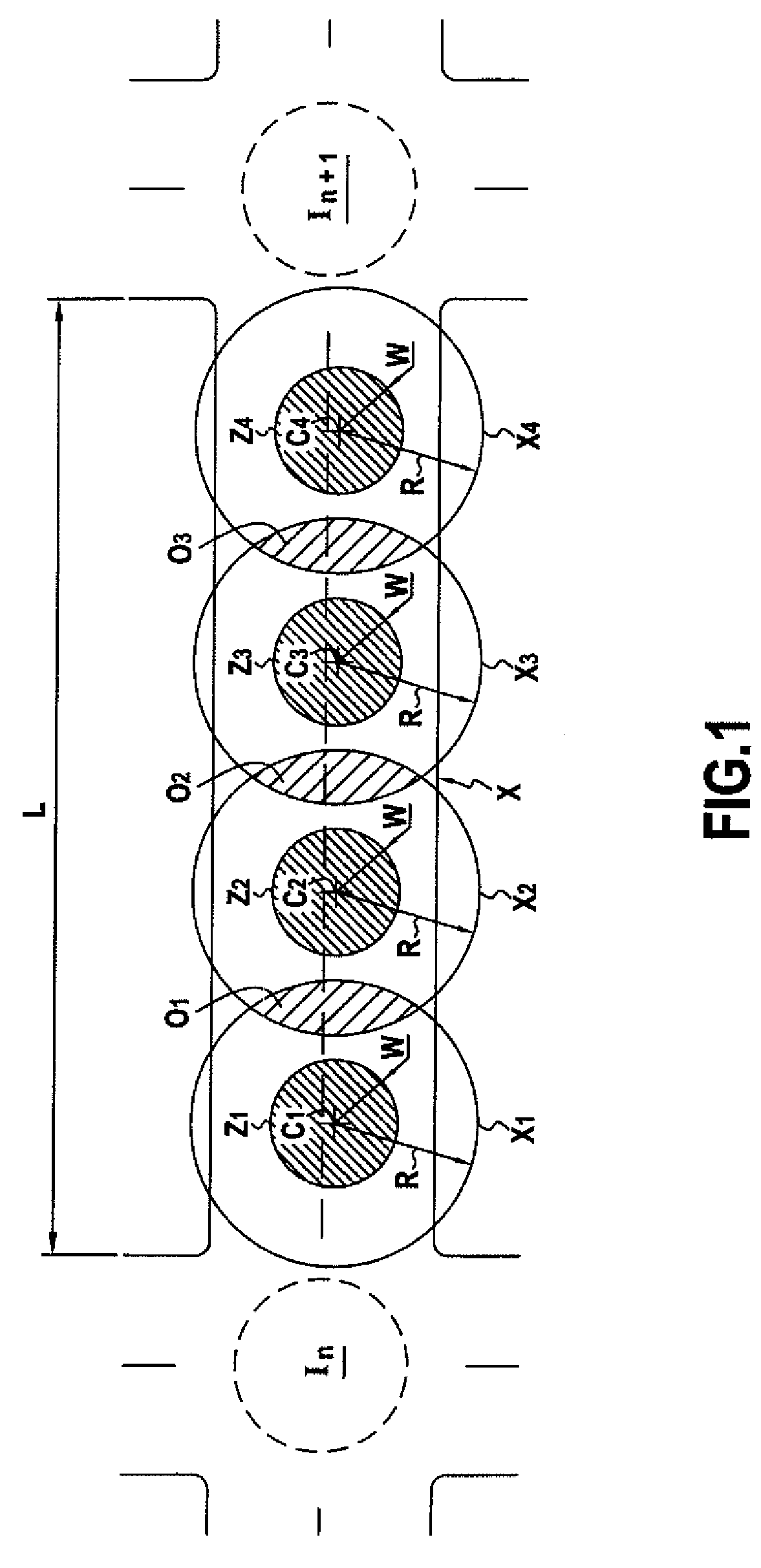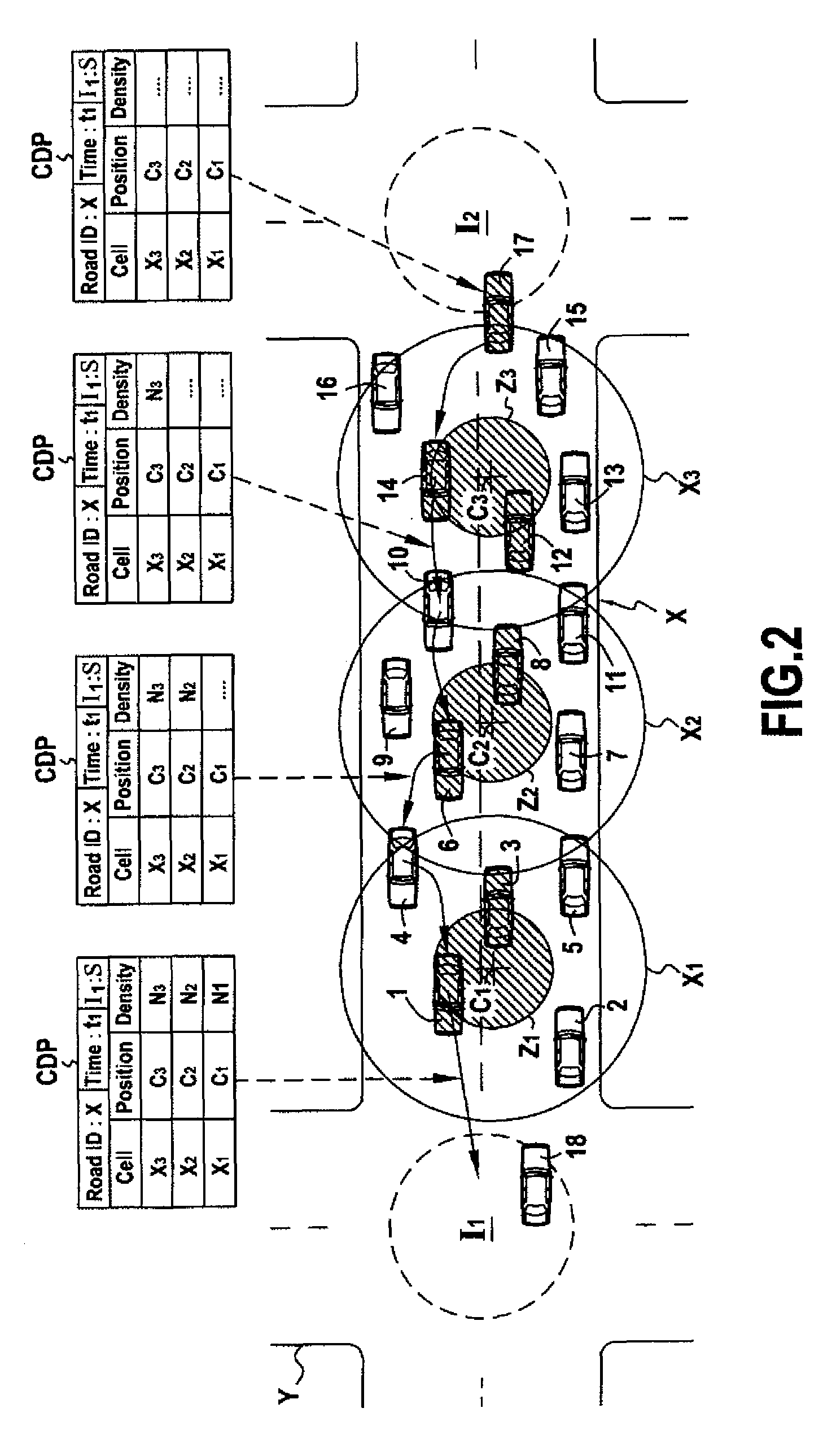Method for estimating and signalling the density of mobile nodes in a road network
a technology of mobile nodes and road networks, applied in the field of intervehicular communication networks, can solve problems such as network bandwidth saturation
- Summary
- Abstract
- Description
- Claims
- Application Information
AI Technical Summary
Benefits of technology
Problems solved by technology
Method used
Image
Examples
Embodiment Construction
[0084]The invention is described in detail below in the context of an intervehicular communications network comprising mobile nodes moving along roads of a road network.
[0085]As is known in the art, each mobile node is a terminal onboard a vehicle and able to communicate with neighbor nodes. The communications terminal includes a wireless communications interface, for example a Wi-Fi™ transceiver that uses the IEEE 802.11 protocol and has a maximum transmission range of approximately 300 meters.
[0086]The expression neighbor node when used herein when referring to a reference node means a node within the transmission range of the reference node.
[0087]The mobile node further includes means for identifying a road on which it is located, consisting of a digital road map representing the geographical road network in which it is moving.
[0088]The identification means are coupled to location means able to determine the instantaneous geographical position of the mobile node. The location mea...
PUM
 Login to View More
Login to View More Abstract
Description
Claims
Application Information
 Login to View More
Login to View More - R&D
- Intellectual Property
- Life Sciences
- Materials
- Tech Scout
- Unparalleled Data Quality
- Higher Quality Content
- 60% Fewer Hallucinations
Browse by: Latest US Patents, China's latest patents, Technical Efficacy Thesaurus, Application Domain, Technology Topic, Popular Technical Reports.
© 2025 PatSnap. All rights reserved.Legal|Privacy policy|Modern Slavery Act Transparency Statement|Sitemap|About US| Contact US: help@patsnap.com



